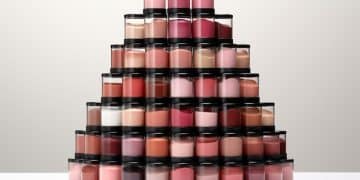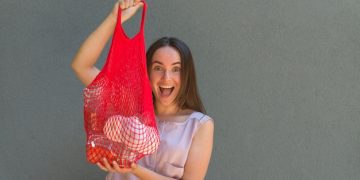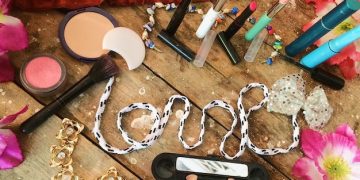Beauty Bargain Hack: Get Discounts Turning Empty Containers into Rewards Points
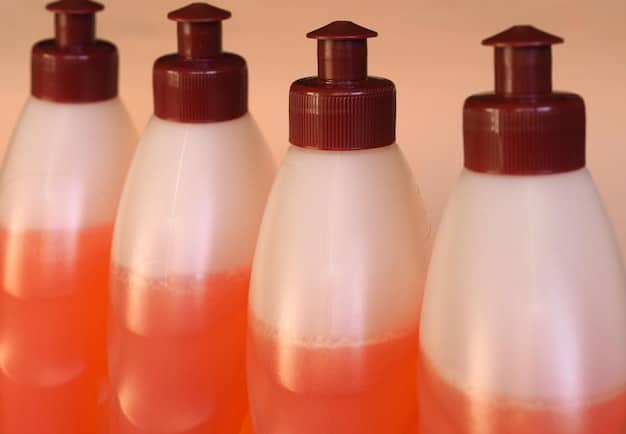
Beauty Bargain Hack: Turn Empty Containers into Rewards Points for Extra Discounts, uncovering how you can recycle your empty beauty product containers for rewards at stores like MAC, Aveda, and Lush, leading to discounts and eco-friendly practices.
Ever wondered what to do with those empty beauty containers piling up? The beauty bargain hack: turn empty containers into rewards points for extra discounts, and it’s not only eco-friendly but also a smart way to save on your favorite products.
Unlock Beauty Savings: The Empty Container Rewards Program
Many retailers are embracing sustainability, and they’re rewarding consumers who participate. By taking advantage of rewards programs offered by beauty brands, you can save money, reduce waste, and contribute to a greener planet.
These programs are designed to incentivize customers to recycle their empty containers, reducing the environmental impact and fostering a sense of responsibility. It’s a win-win: you get discounts, and the planet benefits.
How These Programs Work
The basic concept is simple: collect your empty beauty containers from participating brands, bring them to a store, and receive points or other rewards in return. These rewards usually come in the form of discounts or free products.
However, each program has its rules and requirements. Understanding these details will help you maximize your rewards and ensure a smooth recycling experience.
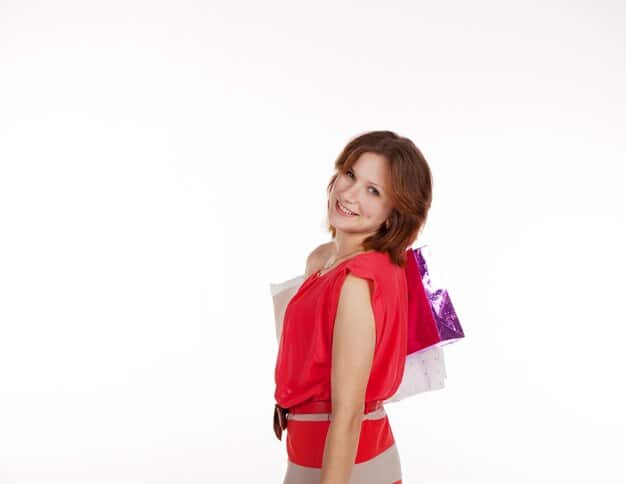
Maximizing Your Rewards Points
Make a habit of keeping your empty containers; don’t throw them away. Create a dedicated recycling bin for your beauty empties and keep it somewhere accessible. This way, they won’t end up in the trash.
- Keep an eye on promotions: Many brands will occasionally offer bonus points or bigger discounts during specific periods.
- Understand the rules: Some programs require containers to be cleaned, while others don’t accept certain types of packaging.
- Combine with other discounts: Try to stack your rewards points with other available discounts, such as coupons or sales.
Turning empty containers into discounts has never been easier, thanks to the programs offered by leading beauty brands. By choosing to recycle, you’re not only saving money but also contributing to a more sustainable future.
Participating Brands: Where To Recycle and Get Rewarded
Not all brands offer recycling programs, but some retailers and manufacturers offer fantastic incentives for eco-conscious consumers. Knowing where to recycle your empty containers is the first step in maximizing your savings.
Let’s take a look at some of the beauty brands that offer recycling programs to reward customers who turn in their empty containers.
MAC Cosmetics: Back-to-MAC Program
MAC’s Back-to-MAC program is well-known among beauty lovers. When you return six empty MAC containers to a MAC store or online, you’ll receive a free MAC lipstick of your choice. Some restrictions apply, but generally, all primary packaging containers qualify.
This program encourages customers to recycle and rewards them with a coveted makeup item. It sets MAC apart as a brand that cares about sustainability and customer loyalty.
Lush Cosmetics: Bring It Back Scheme
Lush’s Bring It Back scheme is another great sustainability initiative. Return five empty Lush pots (the black containers their products come in) to a Lush store, and you’ll receive a free fresh face mask.
This initiative reduces waste and aligns with Lush’s overall commitment to ethical and environmentally friendly practices. Customers appreciate the brand’s dedication to sustainability and the opportunity to try a new face mask.
Aveda: Full Circle Recycling Program
Aveda’s Full Circle Recycling Program offers multiple options for recycling Aveda packaging. You can drop off your empty Aveda containers at participating Aveda Experience Centers or Salons. In some locations, you can also mail back certain hard-to-recycle items through their partnership with TerraCycle.
Aveda’s commitment to recycling is part of its broader sustainability efforts. The brand often uses recycled materials in its packaging and continues to look for ways to minimize its environmental impact.
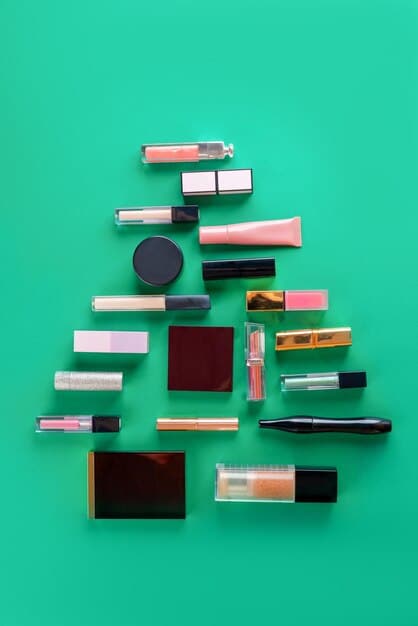
- Kiehl’s: Offers a loyalty program where you can earn points for recycling empty Kiehl’s products at their stores. These points can be redeemed for discounts and free samples.
- Origins: Has a Return to Origins Recycling Program, where you can return empty skincare packaging from any brand at Origins retail stores and department store counters.
- Credo Beauty: Partners with Pact Collective to responsibly dispose of hard-to-recycle beauty packaging, offering a convenient solution for recycling various makeup and skincare containers.
Participating in these programs is a practical way to support brands that prioritize sustainability. Recycling your beauty containers not only helps the environment but also gives you the chance to save on future purchases.
Beyond Rewards: The Eco-Friendly Impact of Recycling Beauty Containers
While the discounts and freebies are enticing, the true value of recycling beauty containers lies in the positive impact on the environment. By participating in these programs, you’re contributing to waste reduction, resource conservation, and a more sustainable future.
Understanding the environmental benefits of recycling your empties can add even more motivation to your sustainable beauty routine.
Reducing Landfill Waste
Beauty packaging is often made from materials that take hundreds of years to decompose in landfills. Plastic containers, in particular, contribute significantly to environmental pollution. Recycling reduces the amount of waste sent to landfills, alleviating strain on these facilities.
By diverting your empty beauty containers from landfills, you’re helping to minimize pollution and conserve valuable land resources. This ensures that these areas remain available for other vital purposes, such as agriculture and conservation.
Conserving Resources
Recycling beauty containers helps conserve natural resources by reducing the need to extract raw materials for new packaging. Recycling turns used materials into new products, requiring less energy and fewer virgin resources.
This conserves raw materials such as petroleum, minerals, and timber, helping to protect ecosystems and biodiversity. Moreover, it lowers carbon emissions by reducing the energy-intensive processes involved in extracting and processing raw materials.
Minimizing the Carbon Footprint
The production of new beauty packaging involves energy consumption and emissions. Recycling can significantly decrease the carbon footprint associated with packaging production, as recycled materials require less energy to process.
This reduction in energy consumption lowers greenhouse gas emissions, helping to mitigate climate change. By recycling, you are playing a part in creating a more eco-friendly beauty industry and a healthier planet.
Supporting a Circular Economy
Recycling also supports the concept of a circular economy, where resources are used and reused as much as possible. Rather than following a linear model of “take, make, dispose,” a circular economy aims to minimize waste and maximize resource efficiency.
By participating in recycling programs, you’re helping create a continuous loop where materials are recycled into new products, minimizing the need for virgin materials and reducing waste. This approach fosters long-term sustainability and a more resilient economy.
Recycling your beauty containers is more than just a way to save money; it’s a meaningful contribution to environmental conservation. Every effort, no matter how small, makes a difference in safeguarding the planet for future generations.
Making Recycling a Habit: Tips for Staying Consistent
Starting to recycle your beauty containers is one thing, but making it a consistent habit is another. Incorporating these practices into your routine will not only maximize your rewards but also reinforce your commitment to sustainability.
Here are some tips to help you stay consistent with your beauty container recycling efforts.
Set Up a Recycling Station
Create a designated recycling station in your bathroom or vanity area. Use bins or containers clearly marked for beauty empties. Having a system in place makes it easier to separate recyclables from trash.
The easier it is to recycle, the more likely you are to stick with it. A well-organized recycling station is a great way to start.
Clean Containers Before Recycling
Some recycling programs require or recommend that containers be cleaned before being recycled. Rinse out excess product to avoid contamination. This small step can significantly improve the recyclability of your empties.
Check the guidelines of the specific recycling program you are participating in to ensure you are following their instructions.
Track Your Progress
Keep track of the number of containers you’ve recycled and the rewards you’ve earned. This can serve as motivation and help you visualize the positive impact you are making.
Use a spreadsheet or journal to document your efforts. Seeing your progress will encourage you to keep going.
Reminders and Prompts
Set reminders on your phone or calendar to remind yourself to recycle your containers regularly. Create visual cues in your bathroom or vanity to prompt you to think about recycling.
A simple sticky note or a decorative sign can serve as a constant reminder to recycle your beauty empties.
Involve Others
Encourage friends and family to join your recycling efforts. Share tips and information about recycling programs with them. Make it a group effort to amplify the impact and support each other’s sustainability goals.
The more people involved, the greater the collective impact. Plus, recycling together can make the process more enjoyable.
By establishing these habits, you can seamlessly integrate beauty container recycling into your daily life. Over time, it will become second nature, and you’ll continue to enjoy the rewards while contributing to a more sustainable future.
Common Pitfalls to Avoid in Beauty Product Recycling
While the intentions are good, there are some common mistakes people make when recycling their beauty product containers. Being aware of these can significantly improve the success of your recycling efforts.
Here are some pitfalls to avoid to make sure your recycling efforts are as effective as possible.
Not Cleaning Out Containers
One of the most common mistakes is not cleaning out product residue from containers. Leftover product can contaminate the recycling stream, making it difficult or impossible to recycle the container.
Always rinse out any excess product before placing the container in the recycling bin. A quick rinse can make a big difference.
Recycling Non-Recyclable Materials
Not all beauty product packaging is recyclable. Items such as pumps, caps, and mirrors are often made from materials that are not easily recycled and can contaminate the recycling process.
Check the recycling guidelines for your local area or the specific recycling program you are using to determine which items are accepted. When in doubt, it’s best to dispose of these items separately.
Ignoring Material Types
Different materials require different recycling processes. Mixing types of materials in the same bin can cause problems at recycling facilities. For example, plastic, glass, and metal should be separated when possible.
Understanding the material types of your beauty product containers and sorting them accordingly can improve the efficiency of recycling.
Overlooking Small Items
Small items, such as sample packets or travel-sized containers, can be easily overlooked when recycling. These smaller items can still make a significant contribution to waste if not properly recycled.
Make a conscious effort to collect and recycle these smaller items as well. Consider creating a separate container specifically for these smaller empties.
Being Unaware of Recycling Programs
Many people are unaware of the specific recycling programs offered by beauty brands. If you’re not sure where to recycle your containers, you might end up throwing them in the regular trash.
Research the recycling programs offered by brands like MAC, Lush, and Aveda. These programs provide opportunities for customers to recycle and earn rewards.
By avoiding these common pitfalls, you can enhance the effectiveness of your beauty product recycling efforts. Every small change you make can contribute to a more sustainable and eco-friendly beauty routine.
The Future of Beauty Recycling: Innovations and Trends
The beauty industry is constantly evolving, and recycling is no exception. As consumers become more aware of environmental issues, brands are innovating and adopting new trends to make beauty recycling more convenient, efficient, and impactful.
Here’s a look at what might be the future of beauty recycling and eco-friendly packaging.
Advanced Recycling Technologies
Advanced recycling technologies are emerging to address the challenges of recycling mixed or contaminated plastics. These technologies can break down complex plastics into their original chemical components, which can then be used to create new plastics.
Chemical recycling is a promising approach that can significantly improve the recyclability of beauty packaging, even those that are typically difficult to recycle.
Biodegradable and Compostable Packaging
Some brands are exploring the use of biodegradable and compostable packaging materials. These materials can break down naturally in a composting environment, reducing the burden on landfills.
While still in early stages, the use of biodegradable and compostable packaging could revolutionize the beauty industry by eliminating the need for traditional recycling processes.
Minimalist Packaging Designs
Minimalist packaging designs focus on reducing the amount of material used in packaging. By minimizing the size and weight of containers, brands can lower their environmental impact and reduce waste.
Adopting minimalist packaging designs is a simple yet effective way to make beauty products more sustainable.
Refillable Packaging Options
Refillable packaging options are gaining popularity as a way to reduce waste. Brands offer reusable containers that customers can refill with their favorite products, cutting down on the number of single-use containers.
Refillable packaging not only reduces waste but also fosters customer loyalty and promotes a more sustainable beauty culture.
Collaborative Recycling Programs
Collaborative recycling programs involve multiple brands working together to create standardized recycling systems. This approach can streamline the recycling process and make it easier for consumers to participate.
By joining forces, brands can amplify their impact and promote a more unified and eco-friendly approach to beauty packaging.
The future of beauty recycling is brimming with possibilities. As the industry embraces innovation and responds to consumer demand for sustainable solutions, recycling will become an even more integral part of the beauty experience. Consumers can look forward to more eco-friendly packaging options, advanced recycling technologies, and convenient recycling programs that make it easier than ever to reduce their environmental footprint.
| Key Point | Brief Description |
|---|---|
| ♻️ Recycle Empty Containers | Turn empty containers into rewards points at stores like MAC, Lush, and Aveda. |
| 💰 Earn Discounts | Receive discounts or free products for participating in recycling programs. |
| 🌱 Reduce Waste | Contribute to waste reduction by diverting empty containers from landfills. |
| 🌎 Eco-Friendly Impact | Support a circular economy and minimize carbon footprint through recycling efforts. |
FAQ
▼
The Back-to-MAC program allows customers to return six empty MAC primary packaging containers to a MAC store or online in exchange for a free MAC lipstick of their choice, excluding certain collections.
▼
Lush offers a Bring It Back scheme where customers can return five empty Lush pots to a Lush store and receive a free fresh face mask as a reward for participating in their recycling program.
▼
Aveda’s Full Circle Recycling Program allows customers to drop off their empty Aveda containers at participating Aveda Experience Centers or Salons. Some locations also enable mailing back hard-to-recycle items through TerraCycle.
▼
Cleaning beauty containers is crucial because leftover product residue can contaminate the recycling stream, making it difficult or impossible to recycle the container. Rinsing ensures effective recycling.
▼
Common mistakes include not cleaning containers, recycling non-recyclable materials like pumps or mirrors, ignoring material types, and overlooking small items such as sample packets when recycling beauty products.
Conclusion
Turning your empty beauty containers into rewards points is a smart way to save money and promote sustainability. By participating in recycling programs offered by brands like MAC, Lush, and Aveda, you can make a positive impact on the environment while enjoying discounts and freebies. Remember to establish consistent recycling habits, avoid common pitfalls, and stay informed about the latest innovations in beauty recycling to maximize your impact.

